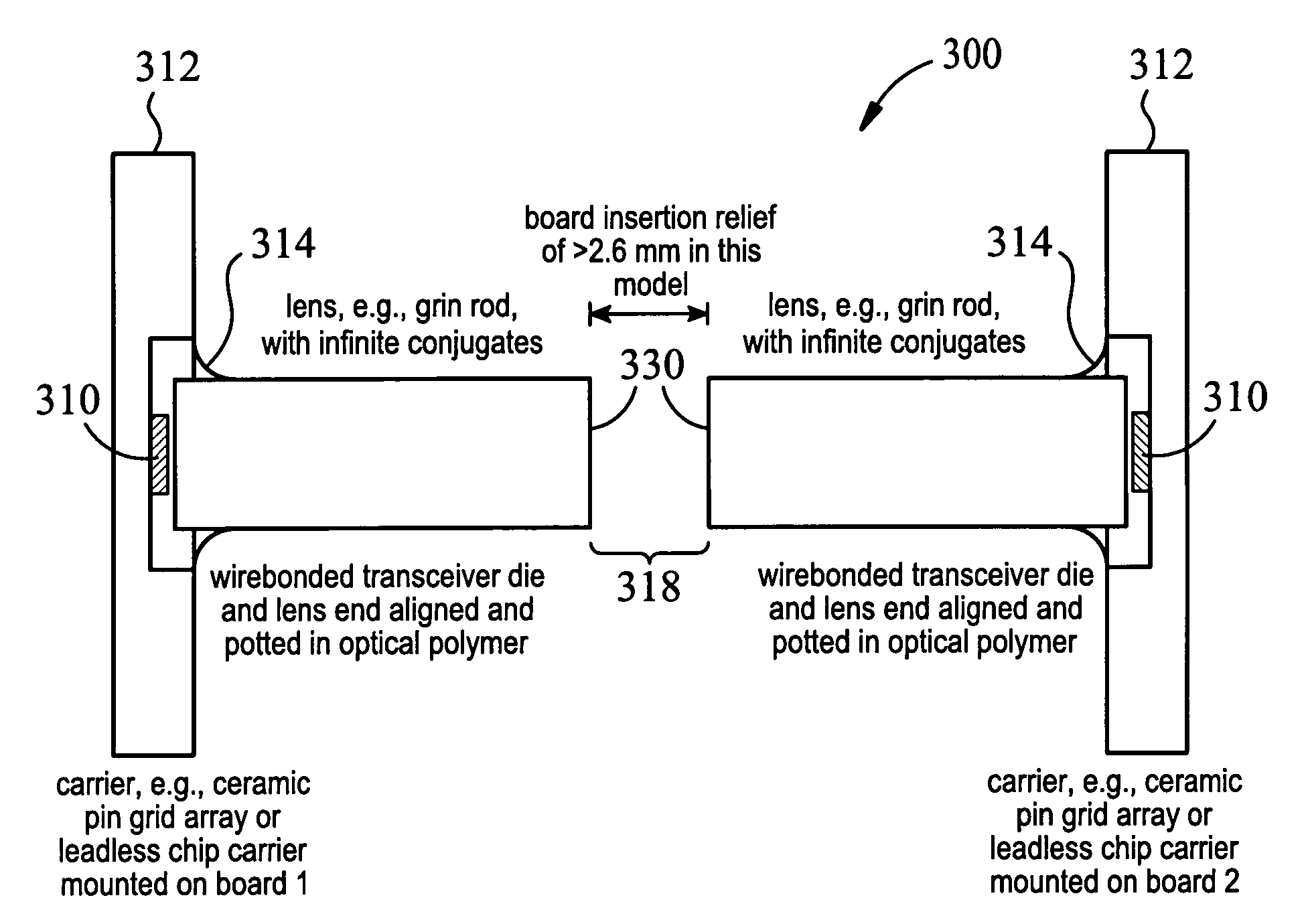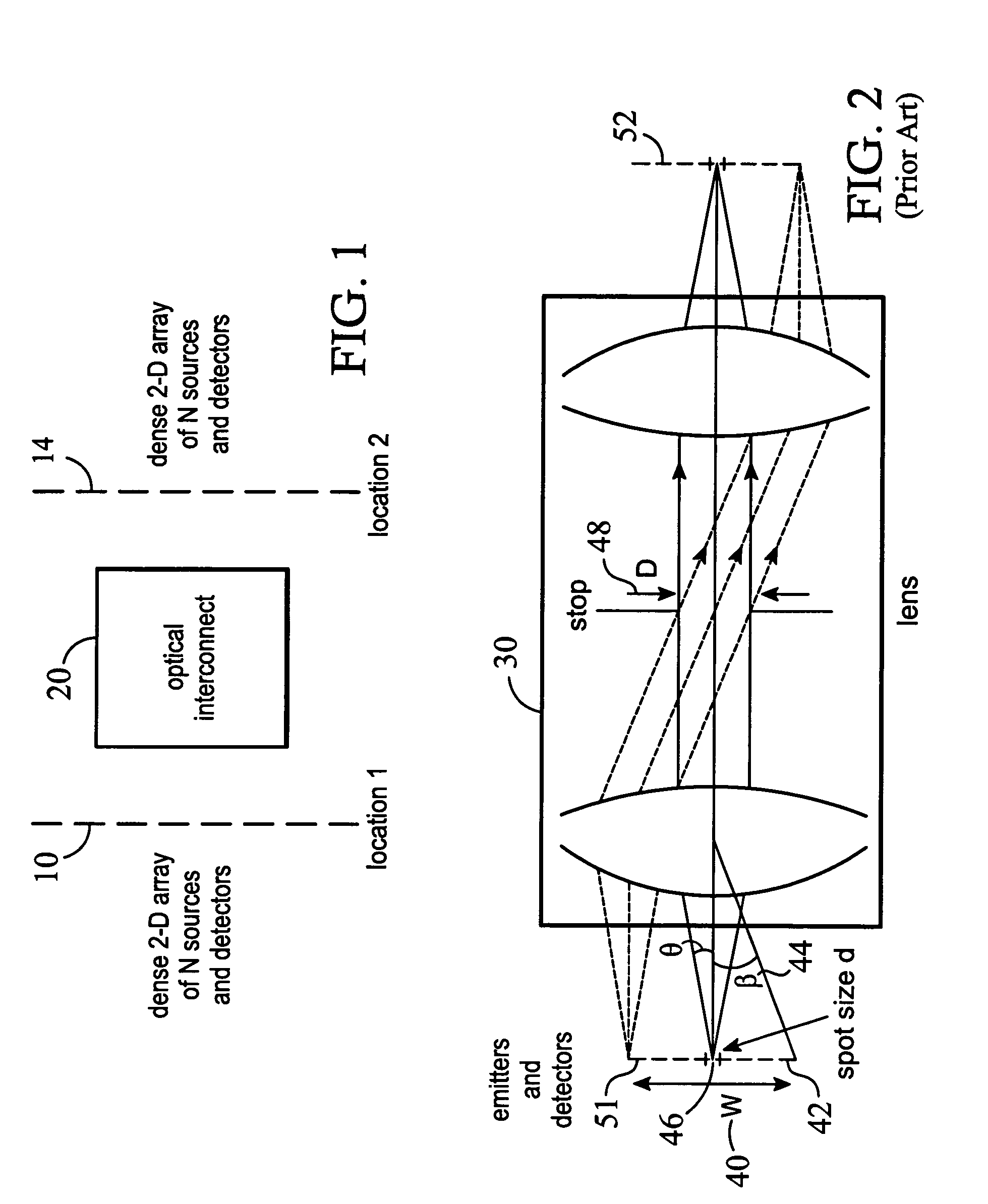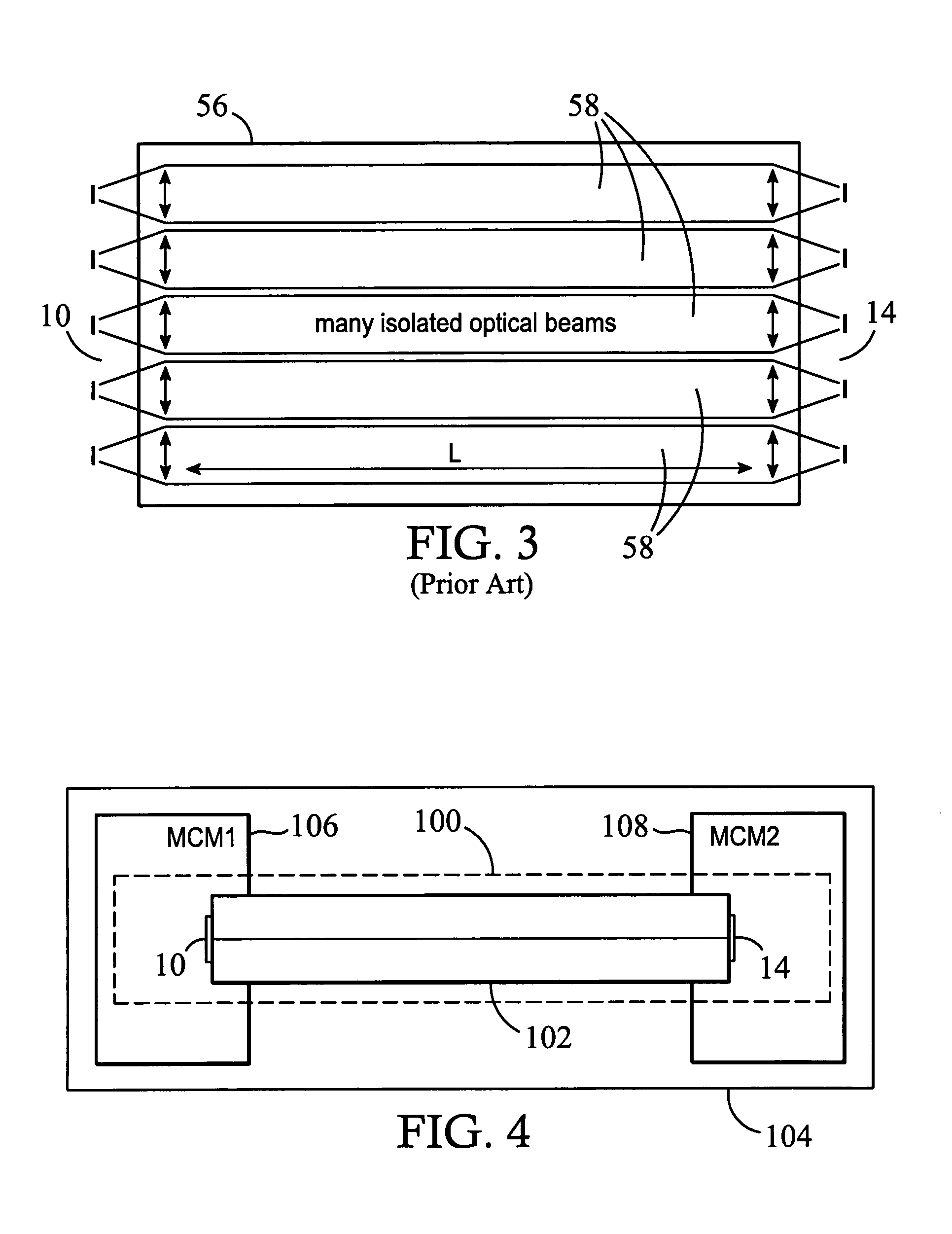Relaxed tolerance optical interconnect system capable of providing an array of sub-images
- Summary
- Abstract
- Description
- Claims
- Application Information
AI Technical Summary
Benefits of technology
Problems solved by technology
Method used
Image
Examples
Embodiment Construction
[0044]If an optical interconnect approach is to have a significant impact in practice, it must possess a variety of desirable characteristics including in particular a tolerance for misalignments and alignment variations among the interconnected components. These areas are highlighted and described briefly hereafter:[0045]Alignment Tolerance, with the ability to function in a practical computer environment which is subject to vibrations, thermal variations, misalignments between interconnected components and devices, etc.[0046]High channel density: allowing for hundreds of parallel channels to be interconnected with a small footprint.[0047]High channel bandwidth: allowing for data rates in the megahertz and gigahertz regimes.[0048]Low insertion loss: allowing for high speeds with low power consumption.[0049]Uniform delay for all data channels, therefore introducing little or no relative skew in the switched signals.[0050]Miniaturized opto-electronics interconnecting many parallel op...
PUM
 Login to View More
Login to View More Abstract
Description
Claims
Application Information
 Login to View More
Login to View More - Generate Ideas
- Intellectual Property
- Life Sciences
- Materials
- Tech Scout
- Unparalleled Data Quality
- Higher Quality Content
- 60% Fewer Hallucinations
Browse by: Latest US Patents, China's latest patents, Technical Efficacy Thesaurus, Application Domain, Technology Topic, Popular Technical Reports.
© 2025 PatSnap. All rights reserved.Legal|Privacy policy|Modern Slavery Act Transparency Statement|Sitemap|About US| Contact US: help@patsnap.com



